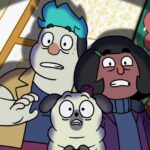
This TikTok video from Kylo Sten begins with a bold claim: “I work in TV post production, and almost all of you guys are setting your TVs up wrong.” Below are Sten’s top three TV-set-up mistakes, plus a few of our own to add to the list.
Turn off motion-smoothing mode
Motion smoothing, or motion interpolation, essentially adds frames to what you’re watching. Movies and TV are generally shot at 24 to 30 frames per second, but newer TVs can operate at 60, 120, or even 240 FPS. Motion smoothing guesstimates what would be in the “missing” frames and adds them in. The setting is great for watching sporting events, but gives other content an artificial look (i.e., the soap opera effect).
According to Sten, “There is no show on TV that is designed to be improved by having motion smoothing turned on.” The same is true of movies, as you can see from this plea from Tom Cruise to turn off this setting.
How to turn off motion smoothing on your TV
Motion smoothing is often set as “on” in your TV’s default setting, so you might not have ever even noticed that you have it on. But you should turn it off. Since different TV’s have different ways of changing settings, I’m going to agree Mr. Cruise, who recommends going to Google and typing: “Turn off motion smoothing [your brand of TV].”
Place your TV at eye level
It might not go with aesthetics of the room where you Netflix and chill, but for optimum watching enjoyment, your set should be at eye-level. “Unless you have a very expensive OLED TV, most TVs are not going to perform well when you’re looking at them at an angle,” Sten says.
So take your TV off that high shelf and position it at eye level from your couch. Not only will it look better, it’ll also prevent neck strain.
Do not use your TV’s built-in speakers
Many people don’t realize how important sound is in the enjoyment of movies and TV, and are happy to just use the shitty built-in speakers that come with their sets. Don’t do this: I promise, movies and TV shows look better when they sound better.
Rey recommends spending 25% of your TV-buying budget on sound and 75% on the actual set, “whether that’s a soundbar or a system.”
I’ve tried out a couple TV soundbars in my life, and I don’t like them, so I recommend a decent stereo receiver and five speakers plus a subwoofer, but almost anything is going to beat the tinny sound from your TV’s speaker.
More improvements you can make to your TV
The three improvements above are relatively basic, but if you want to get deeper into improving you TV-watching experience, check out this post, Change These Settings on Your New TV for a Better-Looking Picture from Lifehacker’s David Murphy, and learn all about calibration, “judder,” why you shouldn’t use eco-mode, and much more.
Credit: Source link



